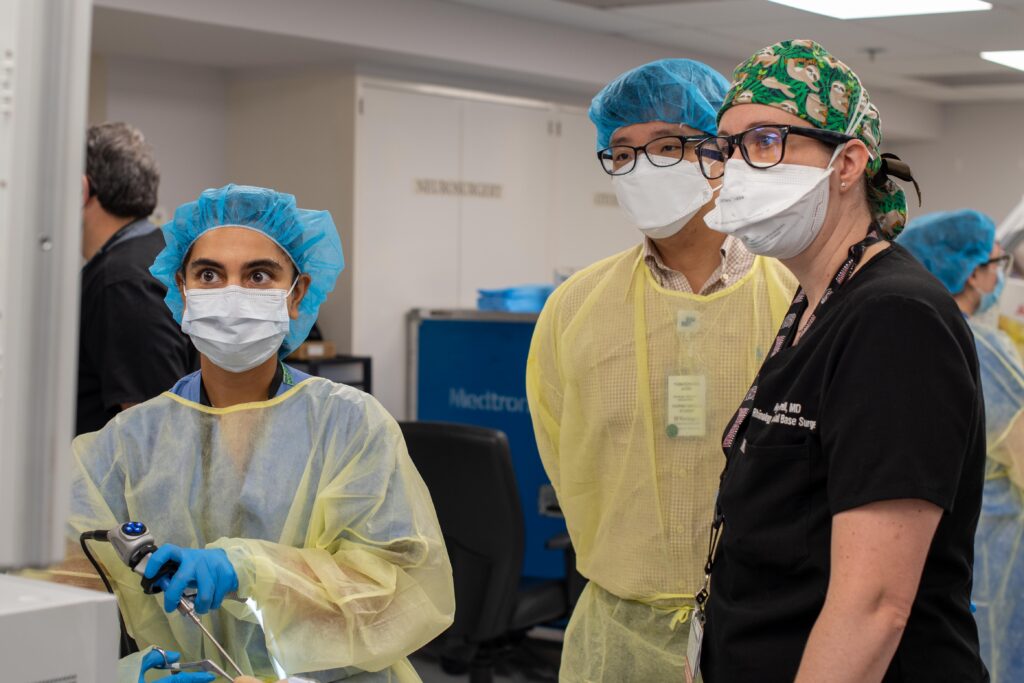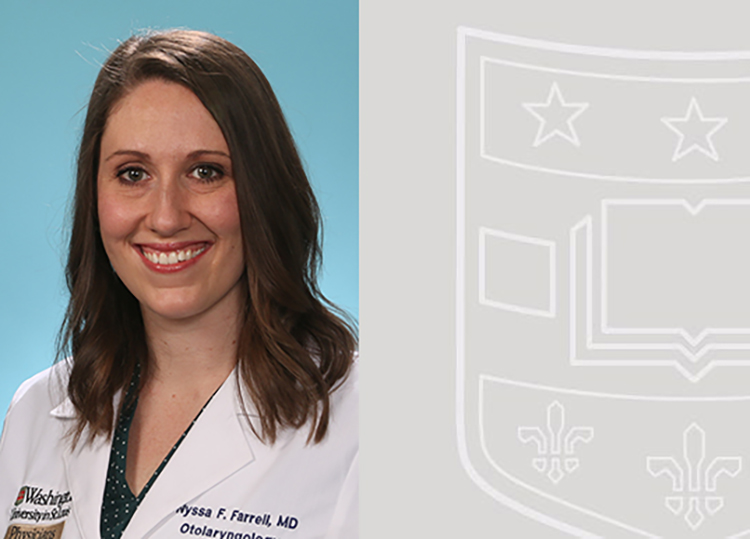Washington University ENT surgeons have launched a clinical trial to help patients who have lost their sense of smell due to COVID-19. The study, led by Department of Otolaryngology rhinologist Nyssa Farrell, MD, hopes to help patients recover olfactory function with injections of a local anesthetic.
The study has reached its recruitment goal of 20 patients, and although final data is still being collected, Farrell says many patients are demonstrating a clinical improvement in their smell based on smell testing.
According to Farrell, the incidence of olfactory dysfunction in COVID patients varies between about 34 and 68 percent. Up to seven percent of these patients show a persistent loss lasting longer than 12 months.

Olfactory receptors in the nasal cavity are extensively innervated by both sympathetic and parasympathetic nerve endings. These are divisions of the autonomic nervous system that engage the body’s ‘fight or flight’ response under stressful circumstances (sympathetic), then return it to normal resting levels when stress has abated (parasympathetic). An emerging view is that the autonomic nervous system can modulate responses of olfactory sensory neurons to odorant stimuli, impacting the sense of smell.
Farrell believes the stress of COVID infection causes a lasting imbalance between sympathetic and parasympathetic control over the olfactory nerve endings, with sympathetic overstimulation interfering with normal olfaction.
Injections of a local anesthetic into the Stellate Ganglion – home to the sympathetic neurons in question – can be done under local anesthesia and is guided by ultrasound imaging. The procedure, says Farrell, is quick and painless.
“Our hope is that Stellate Ganglion blockade can diminish the sympathetic activity and resolve the anosmia [lack of smell] and dysgeusia [taste disorder] due to long COVID.”
Nyssa Farrell, MD
Study coordinator Brevin Miller explained each participant receives an injection on the right side and returns 5-10 days later to have the procedure done on the left side. Three-fourths of patients have received both injections. Mean age of study participants is 46 years, and 75% are female. Study collaborator and Assistant Professor of Anesthesiology Lara Crock, MD, PhD, has been instrumental in guiding study procedures.
To learn more about the clinical trial, visit clinicaltrials.gov or contact Sara Kukuljan. The current pilot study is no longer enrolling patients. To explore other COVID-related smell studies, please visit our Clinical Outcomes Research Office.
